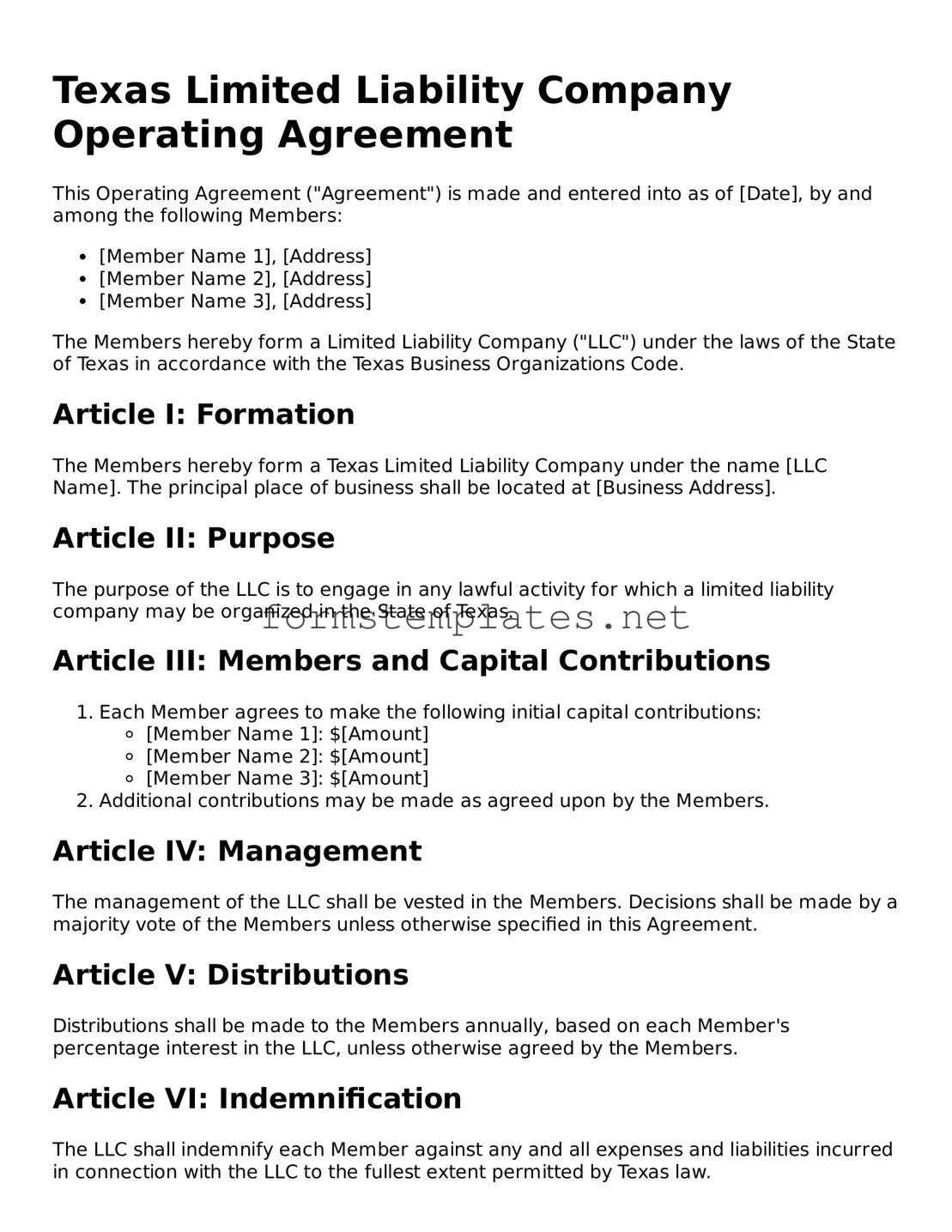Texas Limited Liability Company Operating Agreement
This Operating Agreement ("Agreement") is made and entered into as of [Date], by and among the following Members:
- [Member Name 1], [Address]
- [Member Name 2], [Address]
- [Member Name 3], [Address]
The Members hereby form a Limited Liability Company ("LLC") under the laws of the State of Texas in accordance with the Texas Business Organizations Code.
Article I: Formation
The Members hereby form a Texas Limited Liability Company under the name [LLC Name]. The principal place of business shall be located at [Business Address].
Article II: Purpose
The purpose of the LLC is to engage in any lawful activity for which a limited liability company may be organized in the State of Texas.
Article III: Members and Capital Contributions
- Each Member agrees to make the following initial capital contributions:
- [Member Name 1]: $[Amount]
- [Member Name 2]: $[Amount]
- [Member Name 3]: $[Amount]
- Additional contributions may be made as agreed upon by the Members.
Article IV: Management
The management of the LLC shall be vested in the Members. Decisions shall be made by a majority vote of the Members unless otherwise specified in this Agreement.
Article V: Distributions
Distributions shall be made to the Members annually, based on each Member's percentage interest in the LLC, unless otherwise agreed by the Members.
Article VI: Indemnification
The LLC shall indemnify each Member against any and all expenses and liabilities incurred in connection with the LLC to the fullest extent permitted by Texas law.
Article VII: Amendments
This Agreement may be amended only by a written agreement signed by all Members.
Article VIII: Miscellaneous
- This Agreement represents the only understanding among the Members.
- If any provision of this Agreement is found to be invalid, the remaining provisions shall remain in effect.
IN WITNESS WHEREOF, the undersigned have executed this Operating Agreement as of the date first above written.
Member Signatures:
- _______________________________________
- [Member Name 1]
- Date: ________________________________
- _______________________________________
- [Member Name 2]
- Date: ________________________________
- _______________________________________
- [Member Name 3]
- Date: ________________________________
